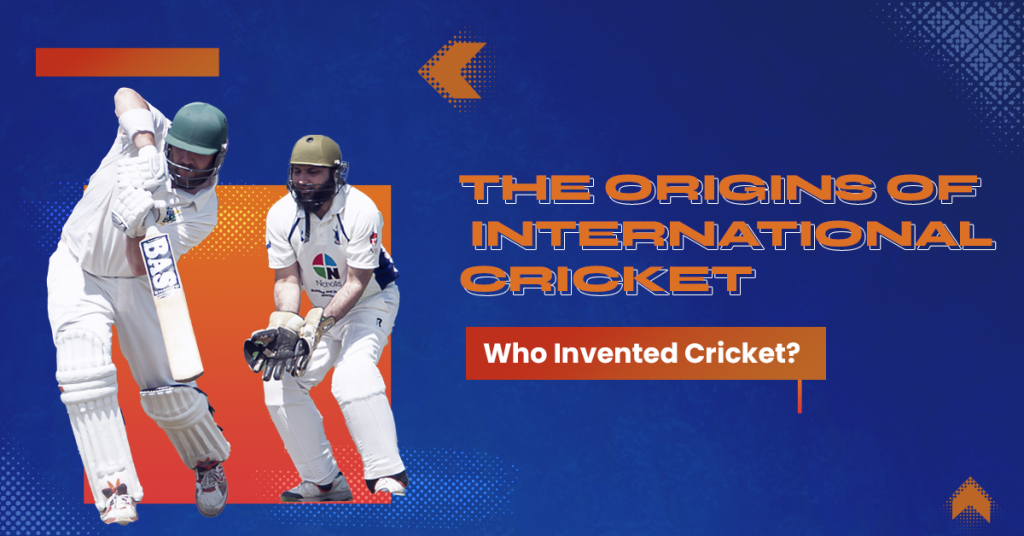
Since we at MrBetting have always loved cricket, we are asked a lot of questions concerning the well-discussed question of “Who Invented Cricket?”. Known as the “Gentleman’s Game,” cricket is a beloved sport that has spread from the rural fields of England to the busy stadiums of the world and beyond. Where did it all start, though?
Come along as we explore the intriguing history of the roots of cricket. We’ll explore how cricket mania expanded outside of Kent, where it all began, and we’ll go back in time to discover how the British Empire brought this unusual pastime to other continents. So let’s get started and find out together who invented the cricket.
Our team of betting experts have also prepared a list of the best cricket betting sites that you can try your luck on, where you’ll also discover a wide selection of reliable bookies’ welcome bonuses and the greatest odds out there.
Firstly, the most important question answered: Who invented cricket?
The history of cricket began in 16th-century England. In England, primitive bat-and-ball games are mentioned as early as the 1300s. By the 1500s, “club-ball” matches were being reported when entire communities would play together during the holidays.
By the early 1600s, bowling overarm at wickets had been a common notion. However, the history of modern cricket dates back to the middle of the 1600s in the southeast county of Kent. In approximately 1611, the first official cricket game was played by Kentish villagers who would gather on public fields to engage in unofficial, competitive cricket matches that developed many of the game’s original rules and ideas, including two sides, a batting order including a batsman, bowlers rolling the ball towards a wicket, players shielding wooden stumps, and the notions of innings and scoring runs.
Cricket’s rules and format underwent major modifications as the game grew in popularity. By the mid-17th century, village cricket had taken shape. In the second part of the century, the first English “county teams” also appeared. “Local specialists” from rural cricket teams were recruited by these teams. It commemorates the first professionals in the field. In 1709, the first game with teams named after counties was officially documented.
Cricket contests were introduced in the 17th century. Cricket had become a well-known sport in England by the 18th century. Cricket’s importance was cemented in large part by the formation of the Marylebone Cricket Club (MCC) in 1787. It developed into a significant organisation that contributed to cricket being more regulated and formal.
A Rural Pastime To An Official Sport: The Spread of Cricket After The 16th Century
The English villages and parishes formed their own clubs and adapted their own rules in the 1600s, and a frenzy for the game of cricket soon spread beyond Kent. The strongest cricket village teams were paired off in “great matches” sponsored by wealthy noblemen, which attracted huge audiences and bet big sums of money.
The first cricket balls had a hard leather casing, so people wore caps and pads to protect themselves. From curved sticks, bats developed into flat willow slabs. The number of stumps was raised to three, boundaries were demarcated, and overarm bowling was made legal.
When Kent and Surrey played in the first inter-county cricket match in 1709, the sport’s reputation as a professional hobby was established. After London established its own club in 1722 and started to dominate the sport, demand for a formal regulating body, or a cricket council, grew.
Towards the beginning of the 18th century, cricket became popular in London and the southeast regions of England. At first, it was only accessible by certain routes. However, in other regions of England cricket gradually became more popular. According to historical records, the first recorded game of women’s cricket was played in Surrey in 1745. An important factor in cricket’s globalisation was the British Empire. Cricket spread across colonial outposts as the empire grew.
In the 18th century, cricket was brought to India by the British. It soon gained popularity among the locals. The game was introduced to the West Indies by colonists. However, it was brought to India by seafarers from the British East India Company. India was, comparatively speaking, a major player in the world cricket movement. And as time went on, the game’s function as a simple sport evolved. It developed into a phenomenon in culture. Despite linguistic and geographic barriers, it drew people together.
The Evolution of Cricket in Later Years
It’s challenging to attribute the invention of cricket to a single person, as is the case with many hobbies that started as unofficial public meetings. The origins of the game included centuries of village games, the establishment of written rules and regulations and urbanisation, which all contributed to the evolution of the present version of this popular sport. The first regulated rules of play, however, were created in 1744 by the London Cricket Club (LCC) and thereafter called the Laws of Cricket.
This set the official measurements of the cricket ground, equipment requirements, scoring system, and standards for good behaviour. Thus, the LCC should be commended for turning cricket from a recreational activity in rural areas into a professional sport with set rules. After moving and changing their name to the Marylebone Cricket Club (MCC), the men and cricket players of the old London Cricket Club (LCC) traced their roots back to the original club for a variety of reasons.
Significant Changes, The Birth of International Cricket and The Sport Today
The game of cricket travelled the world with the British Empire, which was rapidly developing in the 1700s and 1800s. As cricket matches were arranged from Barbados to Bombay to Brisbane, it was evident that British colonists were yearning for their old favourites.
In addition to promoting bitter rivalries, the Empire assisted in the expansion of cricket throughout the continents. The sport was never very popular in the Americas, even though it was established there thanks to England’s 1859 tour of North America. The sport was first introduced in Canada and then the U.S. The first-ever international cricket match took place in 1844 between the United States and Canada, 33 years ahead of the first-ever test match in the history of the sport, which took place in Melbourne between England and Australia in 1877.
But it was during the first Ashes match between Australia and England in 1882 that international cricket truly took off. The teams were unaware that they competed for the coveted “urn” till after England Cricket’s death at The Oval in the same year.
Cricket developed a complete worldwide identity in the 20th century. International contests were made possible by the International Cricket Council (ICC) establishment in 1909. Countries came together in a spirit of rivalry and friendship when the Cricket World Cup was introduced in 1975, and that helped explain why the sport is so popular all across the world.
Since the beginning of the 21st century, across the globe, it has become a fiercely popular sport. This has changed the game with the emergence of Twenty20 competitions such as the Indian Premier League (IPL). Apart from augmenting the sport’s worldwide appeal, these leagues have also introduced an additional dimension of exhilaration and rivalry.
Laws of Cricket and Legal Modifications That Shaped Modern Cricket
Even though the laws of cricket have stayed more or less the same, the modern game has been moulded by a few noteworthy changes:
- In 1864, overarm bowling became legal, which increased its pace and complexity.
- To eliminate batter obstruction, limited-over matches (LBW) were adopted in the late 1800s. Limited-over matches were devised in the 1960s to finish play in a single day.
- In order to increase awareness, colourful apparel and white balls were introduced in the 1970s.
- Helmets were designed for batters in the late 1970s
Conclusion
So, what was basically an unofficial rural hobby has evolved into a well-liked, globally competitive professional sport steeped in history, and no single person can be credited with creating cricket based on what we currently know.
Hence, British imperialism and the uniting force of sport may be credited for the game’s expansion, even if we may never know for sure who was the first to bowl at a wicket or roll a ball along the field to a batter. The basic tactical structure of cricket, which enables both casual enjoyment and intense competitive excitement, is proof of the game’s enduring popularity across cultures and social strata.
With billions of ardent followers who appreciate the spirit and customs of cricket, this beloved “Gentleman’s Game” has gone a long way since its hazy beginnings on parish greens.





